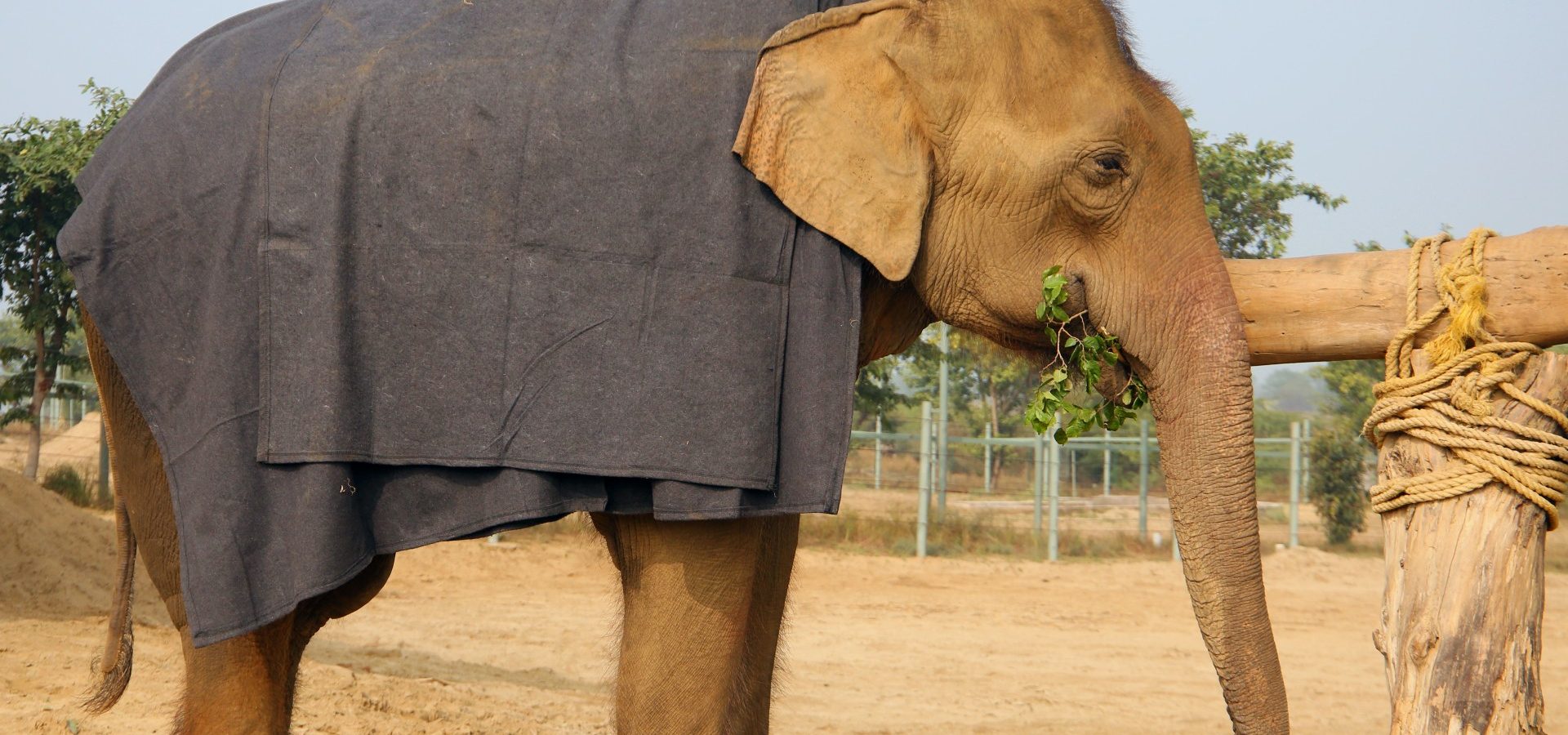Just like summers, the onset of winters requires special and unique arrangements as the rescued animals under our care have to brace for changes in the weather. Northern parts of India get especially bone-chilling and the various Wildlife SOS rescue centres, therefore, have to pull all the tricks out of their hats for the animals to remain comfortable in their skin (literally!). The state of Uttar Pradesh is among the first ones to feel the impact, and as a result, our elephant rescue centres in Mathura face it too. The situation is similar at our Agra Bear Rescue Facility, Dachigam and Pahalgam Bear Rescue Centres in Jammu and Kashmir and Van Vihar Bear Rescue Facility in Bhopal.
Elephant Rescue Centres
The Elephant Conservation and Care and Centre, along with the Treatment Unit, have all the arrangements in place. With the arrival of winter, modification in the elephants’ diet is one of the most noticeable changes. The team has decided to increase the amount of jaggery in their diet. This is supplemented by mashala, which is a concoction of jaggery, carom and turmeric that helps elephants like Pari fight the cold and digest food more easily. Intermittent massages with coconut and mustard oil encourage better blood circulation in her body. These aren’t the only ways we keep our resident elephants warm. The enclosures are fitted with halogen and sodium lamps as well which shield them from low temperatures and chilly winds during the night.
Another provision which keeps the elephants protected is the jumbo jacket. Ageing elephants at the rescue centres require constant warmth this season which these jackets can provide. In the wild, elephants are used to cold weather conditions and if they ever need shelter from the chilly breeze, the jungles are always there to secure them. But at the rescue centres, the resident elephants require interventions in the form of jackets and tarpaulin sheets.
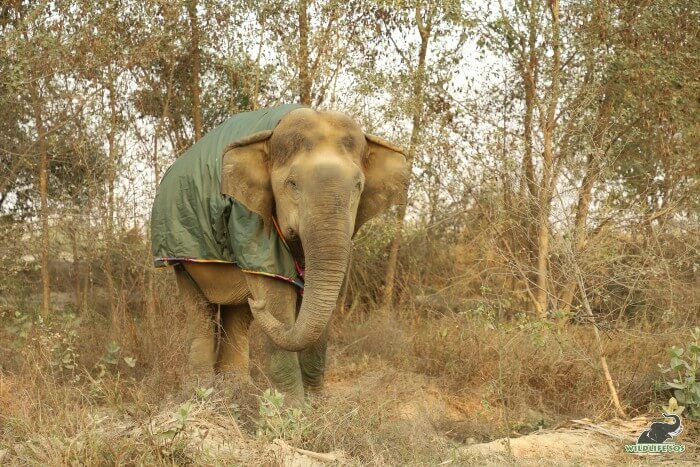
The reason for such measures is deeply embedded in their past lives. The elephants had to tolerate extreme weather, come rain, wind or hail. They were paraded around city streets for begging or as mere showpieces at wedding processions. Their living conditions were unspeakable, with hardly any nutrition and protection offered to keep them warm during the winter months.
Once these elephants are rescued, many of them are in frail condition and require regulated care and monitoring. During winter, the older elephants at the centres are provided with warm sesame oil massages. These massages play an instrumental role for geriatric elephants like Suzy, Bhola, Holly and Nina as it prevents their skin from cracking up due to the cold weather.
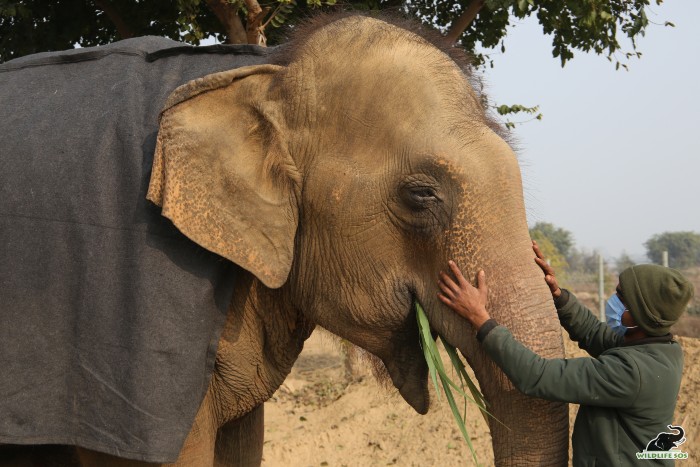
Bhola loves these relaxing oil massages as they spell relief for his ailing joints, and he proceeds for a quick nap on his mud bed right after. Besides the oil massages, Holly and Nina have started wearing the jumbo jackets as well, which are a major saviour from the cold winds. Lighting fires with dung fuel discs is another way to keep the elephants at the centres warm, and this is done under the aegis of the caregivers.
Winters in Jammu and Kashmir
Our team in Jammu and Kashmir is making arrangements to embrace the force of winter. During this time, the bears at the Pahalgam Rescue Centre and Dachigam Bear Rescue Centre become less active. This is evident from their reduced activities which are in stark contrast to how active they are in summer. They prefer sitting rather than moving around. We also see a drop in their appetite because of which providing multivitamins becomes a prerequisite. The intake of seasonal fruit such as apples and the amount of jaggery sees an increase too.
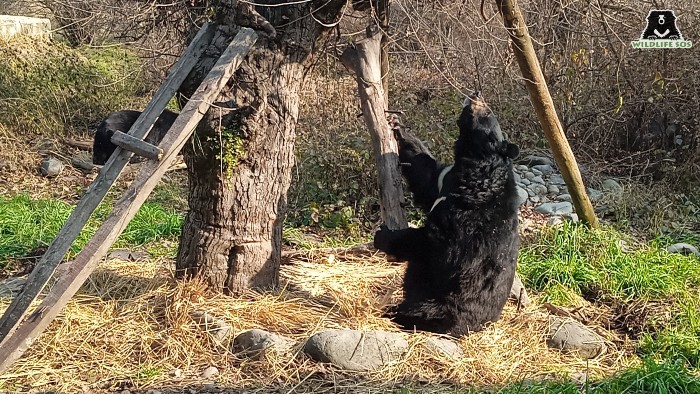
To increase their movement, the staff occasionally hide the apples in their enclosures which makes their time more playful. Even though the diet of the Asiatic Black and Himalayan Brown bears are almost similar, the only major difference is that the latter is known to consume a larger quantity of food. There is also a conspicuous difference observed between the behaviour of both species.
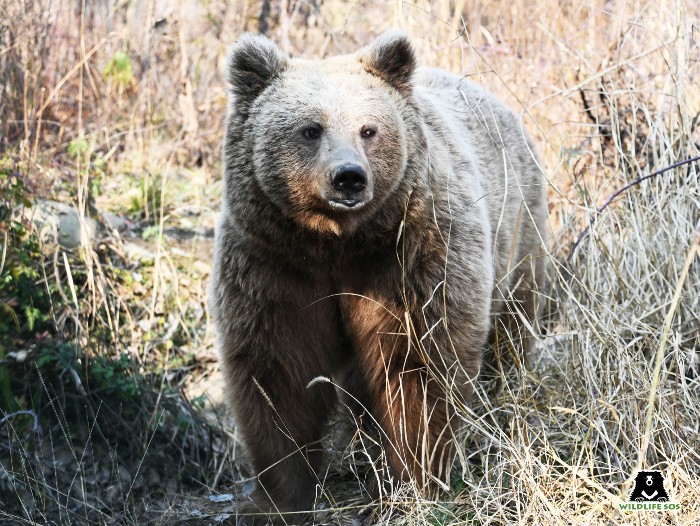
Since the Black bears under our care were rescued at a young age, they are well-acquainted with human presence and aren’t shy in their presence. Inversely, the Brown bears prefer to stay hidden and do not show themselves easily. Another behavioural difference in Brown bears is their habit of digging dens as soon as the winter season sets in by October, which has never been observed in the resident Black bears. In fact, both Sebastian and Nawab, our rescued Brown bears, have dug through hard concrete surfaces in the past to create a den!
When it comes to keeping them warm externally, the staff at the Jammu and Kashmir centres use plenty of hay and dry grass. At the Dachigam Bear Rescue Centre, some of the bears actually prefer to make a nest – and Julie is one of them. Julie drags out at least half of the grass kept inside her den and places it at her favourite sitting spot, which is usually at the bottom of a tree. Julie, Fancy and Rozy, the three female Black bears are often spotted ‘chilling’(!) together there. Sebastian, on the other hand, uses double protection in the form of bushes and a stack of dry grass.
Winter at Agra
In Agra, the temperatures are slowly transitioning to single digits. In winter, the bears at the Agra Bear Rescue Facility (ABRF) usually like to dig pits and sleep in them. Lying there and absorbing Vitamin D from the sun’s rays is probably their favourite pastime during the day. The staff at ABRF place straw bedding inside these pits, and for bears such as Ron and Mowgli, their caregivers place the bedding on the platform enrichments as well. In case of older bears, halogen lights and heaters are installed inside their dens and are switched on when the temperatures drop in the evening.
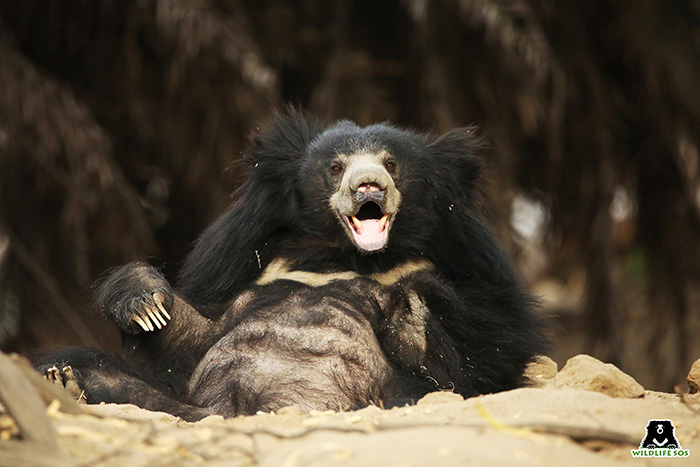
In terms of dietary changes, our Sloth bears are visibly different from the bears in Jammu and Kashmir – they no longer enjoy their delectable fruit platter in winter. Their special winter diet consists of warm porridge along with jaggery. In this weather, jaggery being a hot food acts useful. There is a slight change in the mixture with the amount of ragi being reduced, which is compensated by an increase in the bajra quantity.
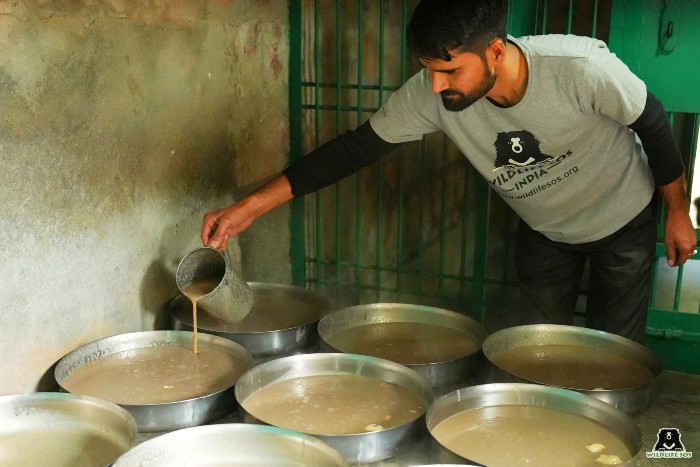
Jaggery is not the only ingredient added to the porridge. Adding broth and dates to the evening porridge is a common practice during winters. But not all the bears prefer the broth and so, we add a boiled egg for these individuals instead. Bears like Elvis, Rose and Bintha get to enjoy some sweet cravings through puffed rice balls and chikki, a treat made with peanuts and jaggery.
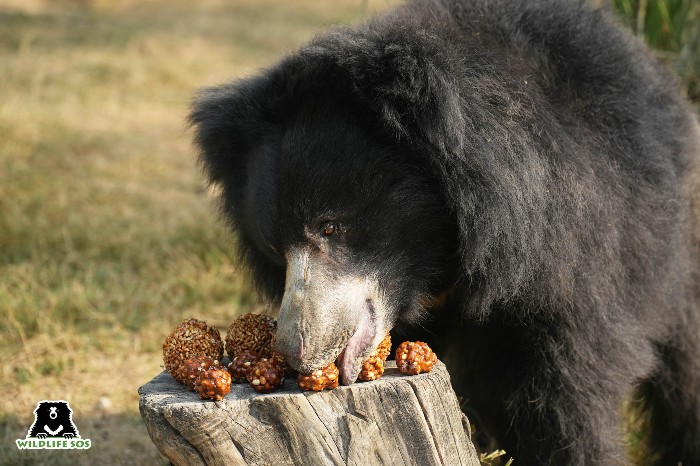
Younger bears like Rose are evidently more active than the geriatric ones. She can be spotted jaunting around the premises of her spacious field, sniffing for the secret treats her caregiver strategically hides to keep her engaged. Rose is often seen taking repeated laps around the field and climbing trees, and joining her in the fun are her friends Elvis and Bintha.
Van Vihar (Bhopal)
The minimum temperature at the Van Vihar Bear Rescue Facility (VVBRF) in Bhopal is hovering around 10 degree Celsius, but in peak winters it can drop to around 6 degrees. So the staff at VVBRF has to be on their toes to prepare all the necessary arrangements for the Sloth bears. It is usually colder at night but most bears prefer to sleep outside the den, with the exception of geriatric bears like Babloo and Nathan.
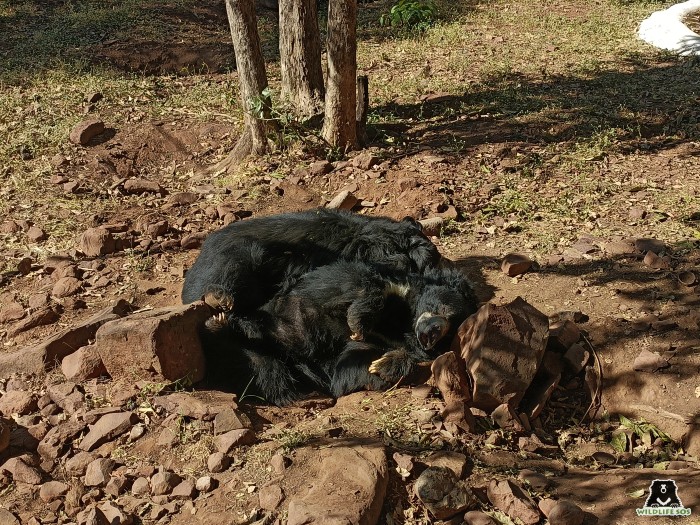
The two dig their pits and cubby holes where they can lie down for hours, thereby keeping themselves warm. For older bears, we use hay and put it inside their dens. Multiple jute sacks are first placed on the floor and the hay is then stationed on them to create a sort of nest. This arrangement keeps the interior warm for our geriatric bears Babloo, Nathan, Ruby and Ritu, to name a few. Babloo uses the simulated nest almost everyday during the winter season. Nathan, on the other hand, sets the hay aside to simply sleep on the floor!
When it comes to diet, papayas work well as it is considered a hot food. Besides, broth and the regular porridge served in the evening also help the bears remain warm. But the food temperature has to be regulated accurately to ensure it is neither too hot nor too cold. Once the bears have had their meal, basking in the sun all day long comprises a major part of their day during the winter season.
After multiple brainstorming sessions, our veterinarians and caregivers have innovated these winter management methods to provide warmth and care to rescued animals at our centres. It is evident how crucial these measures are for the animals, and sustaining these arrangements require resources. This is where you can step in and help us with their upkeep. Click here to become a monthly donor for Wildlife SOS so that the animals can continue a life of peace and comfort.

